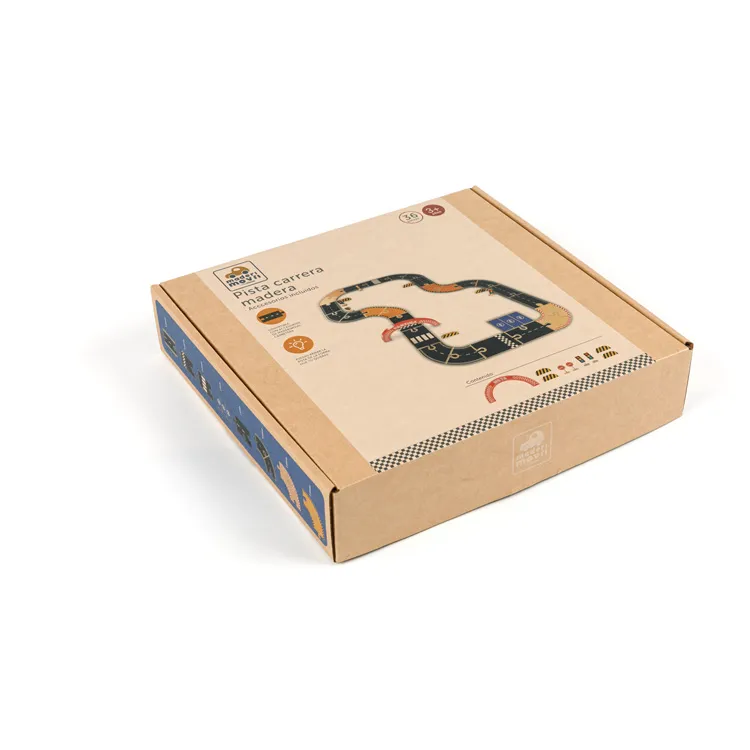- English
- 简体中文
- Español
- Português
- русский
- Français
- 日本語
- Deutsch
- tiếng Việt
- Italiano
- Nederlands
- ภาษาไทย
- Polski
- 한국어
- Svenska
- magyar
- Malay
- বাংলা ভাষার
- Dansk
- Suomi
- हिन्दी
- Pilipino
- Türkçe
- Gaeilge
- العربية
- Indonesia
- Norsk
- تمل
- český
- ελληνικά
- український
- Javanese
- فارسی
- தமிழ்
- తెలుగు
- नेपाली
- Burmese
- български
- ລາວ
- Latine
- Қазақша
- Euskal
- Azərbaycan
- Slovenský jazyk
- Македонски
- Lietuvos
- Eesti Keel
- Română
- Slovenski
- मराठी
How to Recycle Corrugated Boxes Effectively
2024-10-10
Recycling corrugated boxes is an environmentally friendly way to manage waste, reduce deforestation, and lower energy consumption. Effective recycling of these boxes not only helps reduce landfill waste but also contributes to the creation of new paper products. Here’s a step-by-step guide on how to recycle corrugated boxes effectively:
1. Understand Corrugated Boxes
- Corrugated boxes are typically made of three layers: an outer liner, an inner liner, and a corrugated medium in between, making them strong and durable.
- These boxes are commonly used for shipping and packaging due to their lightweight yet sturdy nature.
2. Preparation for Recycling
- Remove All Contents: Ensure the box is empty, and remove any non-paper materials such as bubble wrap, foam inserts, plastic bags, or other packing materials.
- Remove Contaminants: Take off any non-paper labels, adhesive tapes, and staples. While a small amount of tape is acceptable, large pieces of it or other contaminants can affect the recycling process.
- Flatten the Boxes: Flattening the boxes saves space, making storage, handling, and transportation to recycling centers easier.
3. Sort and Separate
- Separate by Grade and Quality: If you have different types of cardboard or corrugated boxes, sort them by quality. Heavily soiled or wet boxes should be separated as they can’t be recycled with clean ones.
- Keep Dry and Clean: Wet or contaminated cardboard cannot be processed efficiently, as moisture can weaken the fibers, and food or oil contamination can affect the quality of the recycled product.

4. Proper Storage
- Store the flattened boxes in a dry and clean location until you’re ready to take them to the recycling center. This helps maintain the quality of the material, ensuring it’s suitable for recycling.
5. Choose the Right Recycling Method
- Curbside Recycling Programs: Check with your local waste management company to see if they accept corrugated boxes in their curbside recycling program. Make sure to follow their guidelines regarding size, preparation, and collection days.
- Drop-off Recycling Centers: If curbside pickup isn’t available, look for a nearby recycling center that accepts corrugated cardboard. Many centers have designated bins or drop-off areas for cardboard materials.
- Commercial Recycling Services: Businesses with a large amount of corrugated box waste can partner with commercial recycling services that offer pickup, baling, and processing services.
6. Recycling Process at the Facility
Once the corrugated boxes reach a recycling facility, the process typically involves:
- Sorting and Shredding: The collected corrugated boxes are sorted by quality and shredded into small pieces. Shredding helps break down the material and prepare it for further processing.
- Pulping: The shredded cardboard is mixed with water and chemicals to create a slurry or pulp. This process helps separate the paper fibers from other contaminants.
- Screening and Filtering: The pulp is then screened and filtered to remove any remaining impurities such as tape, ink, or glue.
- De-inking and Cleaning: Inks, adhesives, and other materials are removed through chemical or mechanical processes to ensure the recycled pulp is clean and ready for manufacturing.
- Reformation into New Products: The clean pulp is then pressed, dried, and formed into new sheets of paper, cardboard, or other products such as packaging materials, paper towels, or tissue paper.
7. Reuse and Upcycle Options
- Reusing Boxes: If the boxes are in good condition, consider reusing them for storage, shipping, or DIY projects before deciding to recycle.
- Creative Upcycling Ideas: Transform corrugated boxes into household items like organizers, cat houses, or children’s crafts.
8. Avoid Common Recycling Mistakes
- Do Not Recycle Greasy or Oily Boxes: Pizza boxes and other food-stained cardboard should not be placed in recycling bins, as food contaminants can affect the quality of the pulp.
- Avoid Placing in Plastic Bags: Do not put flattened boxes in plastic bags before recycling. Plastic bags can cause issues in the sorting and pulping process at recycling facilities.
- Check for Wax Coatings: Some corrugated boxes have wax coatings, particularly those used for transporting produce. Wax-coated cardboard cannot be recycled with regular corrugated boxes, as the wax can contaminate the recycling stream.
9. Implement Recycling Programs (For Businesses)
- For businesses generating large amounts of corrugated box waste, consider implementing a structured recycling program. This could include designated recycling areas, compactors, or balers for cardboard management, and partnering with a recycling service provider for regular pickup.
10. Educate and Raise Awareness
- Educate employees, customers, and community members about the importance of recycling corrugated boxes. Clear signage, training sessions, or informational brochures can help increase participation and reduce contamination.
Conclusion
Recycling corrugated boxes effectively requires careful preparation, sorting, and adherence to local recycling guidelines. By following these steps, you can ensure that the boxes are processed correctly, minimizing waste and contributing to sustainable paper production.
Corrugated Box made in China can be bought withlowprice fromStarlight,which is a professional high quality Corrugated Box manufacturers and factory in China. Welcome to inquiry us andy@starlight-printing.com




